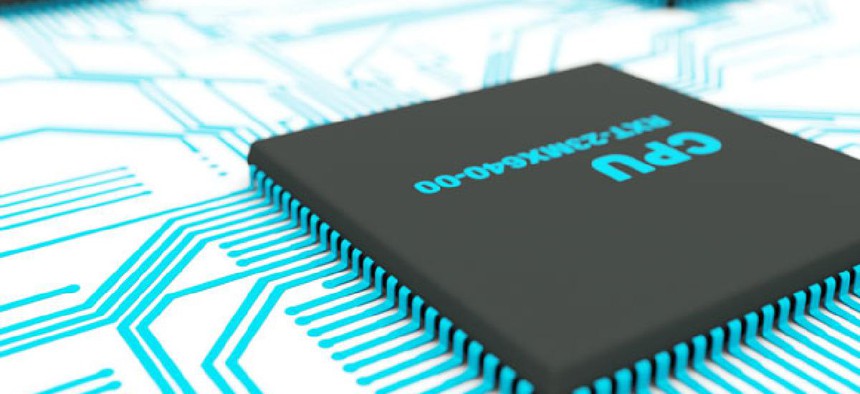Engineers face hurdles making advanced chips for complex machines

Mishchenko Mikhail/Shutterstock.com
Technology could limit innovations in computers, weapons systems
As engineers try to squeeze more transistors onto each square of silicon in the chip-making process, they are running into problems. The manufacturing technology isn’t capable of mass-producing the tiny patterns of circuitry for chips needed in sophisticated computers and weapons systems anticipated for the future, The Wall Street Journal reports.
Lithographic technology uses light to project tiny patterns of circuitry on microchips, but this is a blunt tool for creating the miniaturized features envisioned for chips in advanced devices. The problem is the wavelength of conventional light is larger than the features being defined in advanced chips.
Extreme ultraviolet, or EUV, lithography, which produces shorter wavelengths of light and is a more calibrated way to make chips, remains too costly for high volume manufacturing. Manufacturing tools based on the technology cost about twice as much as machines currently in use and can't yet make chips quickly enough to be practical, the article notes.
Delays in refining EUV will make it costly for defense contractors and manufacturers to build advanced chips and could limit innovations in communications devices and computers sought by the military services.
The military has been eyeing ways to develop new processes for making chips. In April, the consortium of chip makers and the Defense Advanced Research Projects Agency issued a solicitation for partners to develop semiconductors with the help of nanotechnology and quantum engineering, NextGov previously reported.
Image via Mishchenko Mikhail/Shutterstock.comNEXT STORY: Curiosity Rover busts out the telephoto lens





